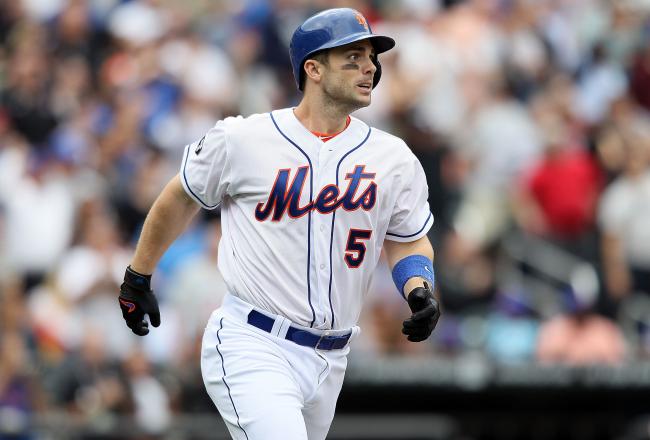At first glance, the eight-year, $138 million deal David Wright signed early Friday morning didn’t appeal to many. Originally, reports indicated that the Mets wanted to offer a little less than $120 million, and the Wright camp started out well above $140 million, so I was very surprised that the two sides settled for such a high amount. However, when you dig deeper into the deal, it looks like more of a bargain than I, and many other fans, thought it was.
Let’s start off by giving you some background information. One win last season (1 WAR) cost teams an average of about $5.5 million. Now, that number is going to rise dramatically over the next few years as more multi-billion dollar television deals keep rolling in and teams have more money to spend. We have only really seen the beginning of what could be a huge increase in player salaries over the next ten seasons.
Wright over his career as a full-time third baseman (2005-present) has averaged about 5.5 WAR per season, including last year’s 7.8 mark. Bill Petti of Fangraphs did an experiment to predict the value of his contract in dollars using his projected wins above replacement. Here’s what Petti projected:
There are two things that we have to consider here. One, we don’t know exactly how Wright is going to decline. My guess is he will decline much slower than this data suggests, mainly because of the exceptional durability Wright has shown over the years, playing over 155 games in five separate seasons. The second is, as I mentioned earlier, the rise in price per win. Petti projects the increase to be about five percent each season. I think it could grow even faster as the television deal boom continues, which would mean that this deal will look better over time.
Out of curiosity, I wanted to look into how players who put up similar numbers to Wright compared in the twilight of their careers. For that, I used Baseball-Reference’s similarity score. I looked at five of the top players (three of them third basemen) based on these scores through the age of 29. Below is a chart depicting how these players declined from the age of 30 onward using fWAR (Fangraphs’ version of WAR). Here it is:
Unless Wright is the next Del Ennis, who at age 33, just stopped being productive and was out of baseball one year later, these projections look almost conservative compared to the other declines. Is David Wright worse than Scott Rolen? I think there just about on par with each other. Petti is using a standard approach to a player’s decline, but I think Wright’s decline could be slower than it is projected to be.
One aspect that I haven’t talked about yet, something that you can’t put a numerical value on but is certainly something to consider, are the intangibles Wright brings to the team. Those can’t be measured like wins above replacement, but when you’re talking about intangibles, Wright definitely helps the team. He is reportedly a great leader and role model in the clubhouse for younger players. And with the Mets getting younger, it’s important to have at least one steady veteran around. Plus, the PR factor that he will bring to the team now that he is a “Met for life” is incredible. (I would finally be comfortable buying an expensive David Wright jersey.) He is now the undisputed face of the franchise. Wright is everything that can be asked for in a role model and captain of a team. You can’t put a monetary value on that but regardless of what you think about the idea of having a leader or captain, it certainly at least adds some value.
Right now, it certainly feels like Wright got paid way too much in this deal, but there’s another side to it. When it’s all set and done, Wright may have been worth $20, $30, or even $40 million more than what he signed for if he stays healthy. So say what you will about the risk involved in terms of health, contracts similar players signed, or the finances of the organization, but this deal looks like it will be looked at very positively down the road.
















